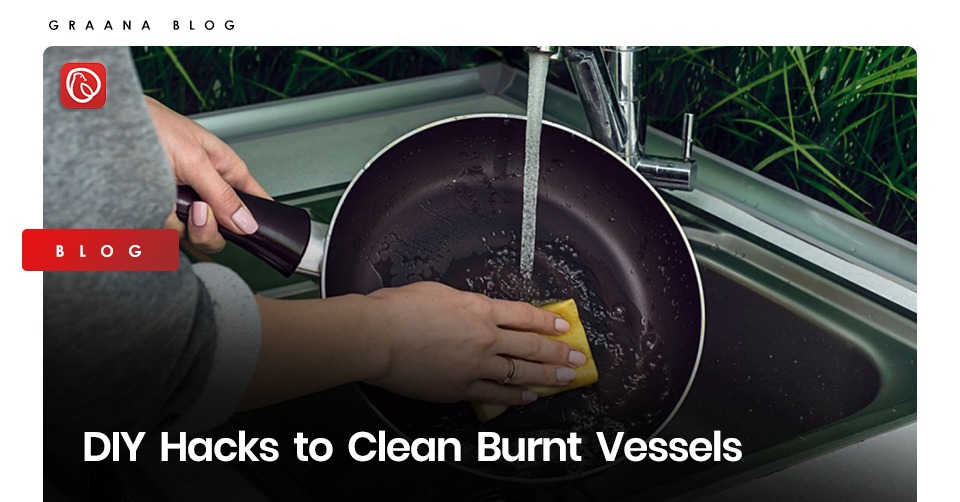When it comes to burnt vessels, many people either choose to replace them with new utensils eventually or spend ages scrubbing the stubborn marks. However, it does not have to be a difficult process – there are many home hacks that can help you clean burnt pots and pans along with your kitchen countertops. Some of these may even prevent them from getting ruined in the first place. Graana.com has briefly discussed some of these useful hacks below, which can help you clean burnt vessels easily at home.
Most Effective DIY Hacks
Let’s go over some quick fixes for cleaning a charred utensil.
- Onion
- Salt
- Hot water
- Baking soda
- Dishwashing liquid
- Vinegar
- Tartar cream
- Tomato ketchup
- Lemon juice
- Wine
- Fabric softener
- Aerated drinks
Onion
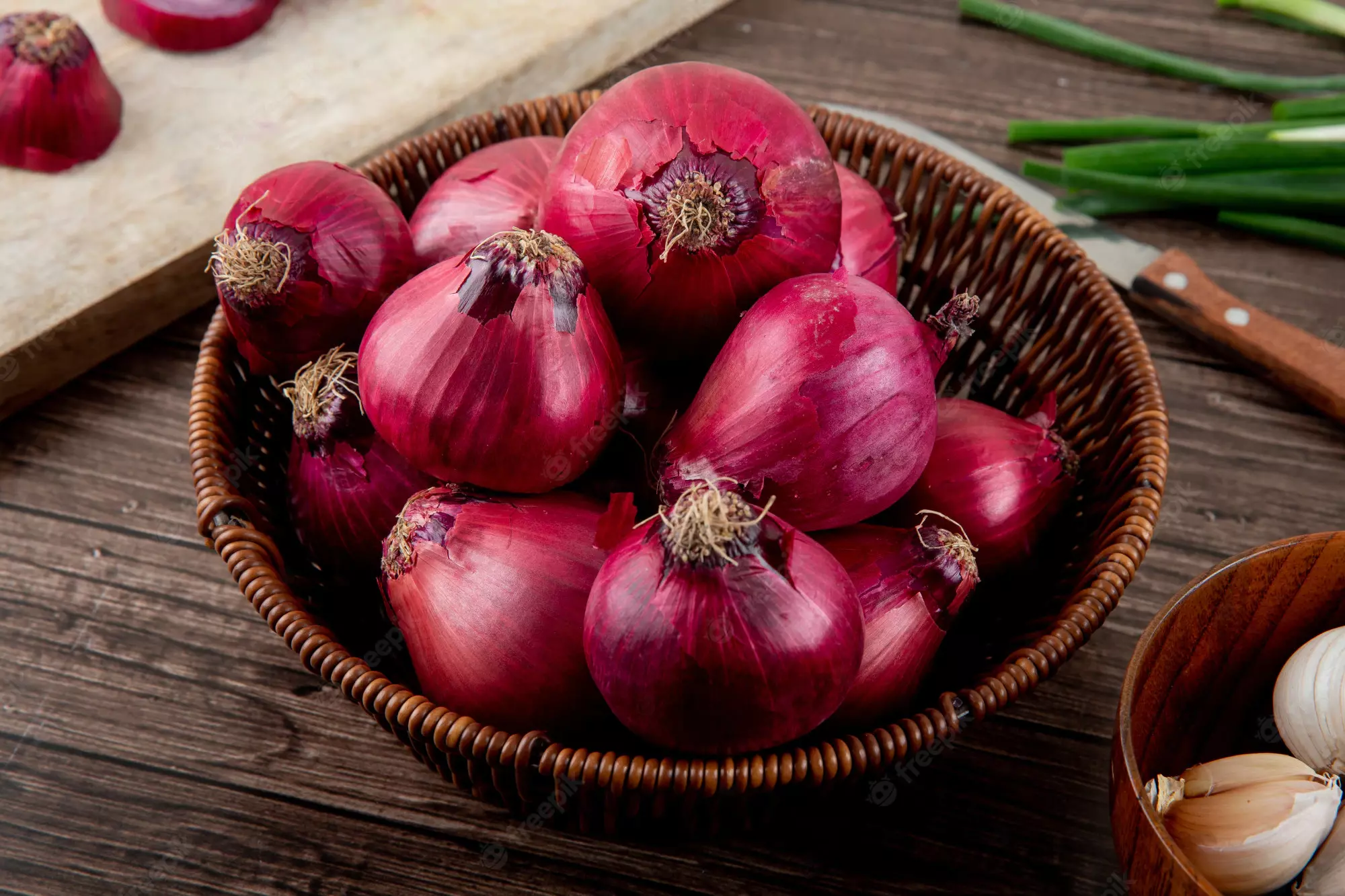
Onions are quite beneficial as they contain many chemical compounds, which also help in cleaning burnt stains from cookware. First, add water to the burned vessel, then add 5 to 6 onion peels. Finally, cover the container and heat the combination over a high flame. Boil it for 20 to 30 minutes.
Hard stains will become less sticky as a result, and you may easily remove them from the utensils by using regular dish soap and a sponge. This is one of the simplest cleaning hacks.
Salt
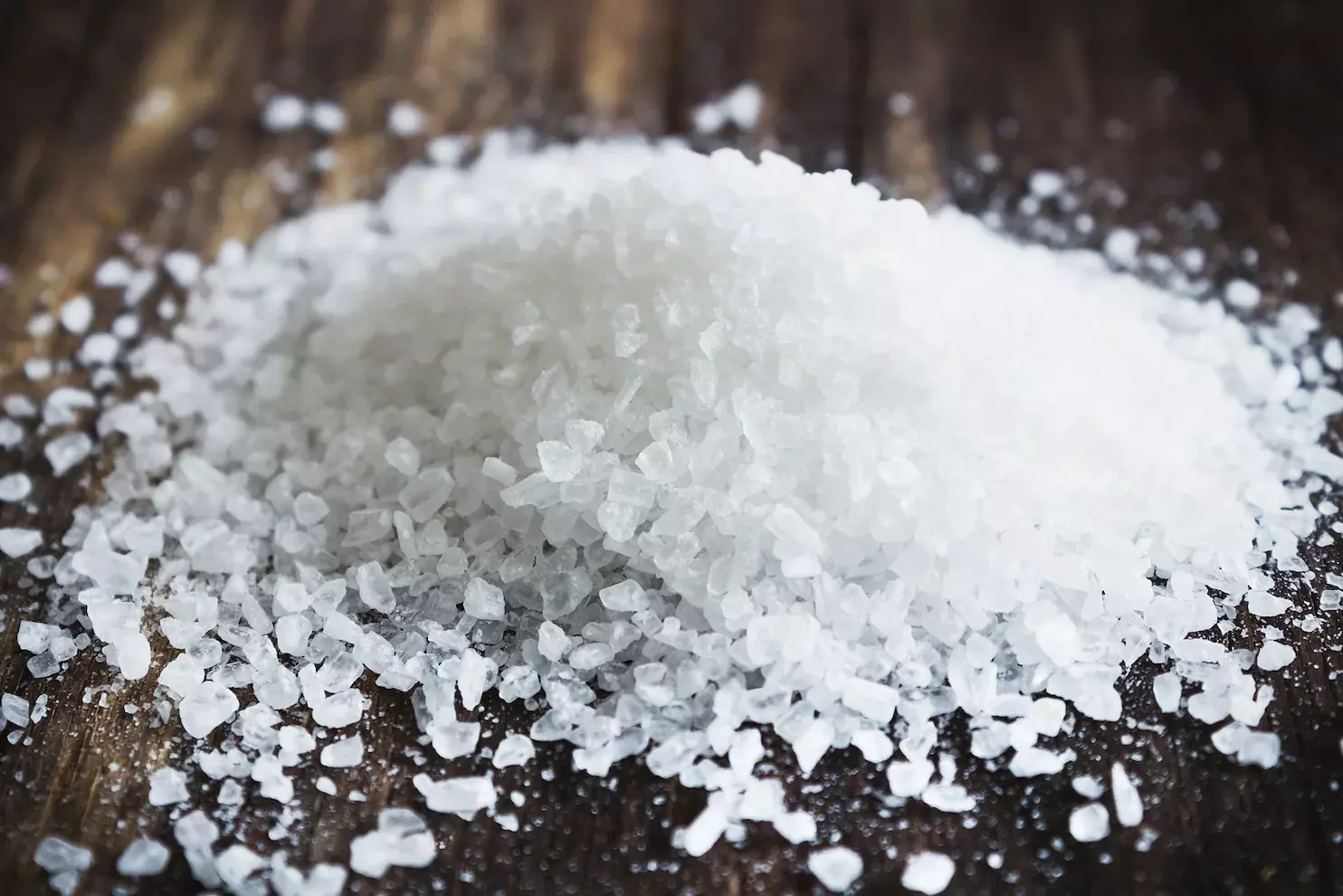
Using salt is also one of the best options for cleaning burnt dishes. You can easily remove the scorched stains with the aid of this natural component – all you need to do is just boil some water and add a healthy amount of salt to it. Most of the charred spots disappear, as a result, restoring the vessel to its former polished state.
Put your stainless steel or enamel cookware on the stovetop and turn the heat on to clean it (a nonstick pan doesn’t require this technique).
Put a drop of water in the pan to see if it’s hot enough; if it sizzles, add a cup of water and let it simmer for a little while (you can also add some dish soap as a catalyst if you like). Use a wooden spoon or nylon spatula to scrape away the scorched marks.
Alternatively, you can perform the same procedure using hot water from the faucet. Simply set your burned object underneath it and use a sponge to scrub the afflicted area to remove the stain. It is one of the best and easiest techniques to clean burnt vessels.
Baking Soda
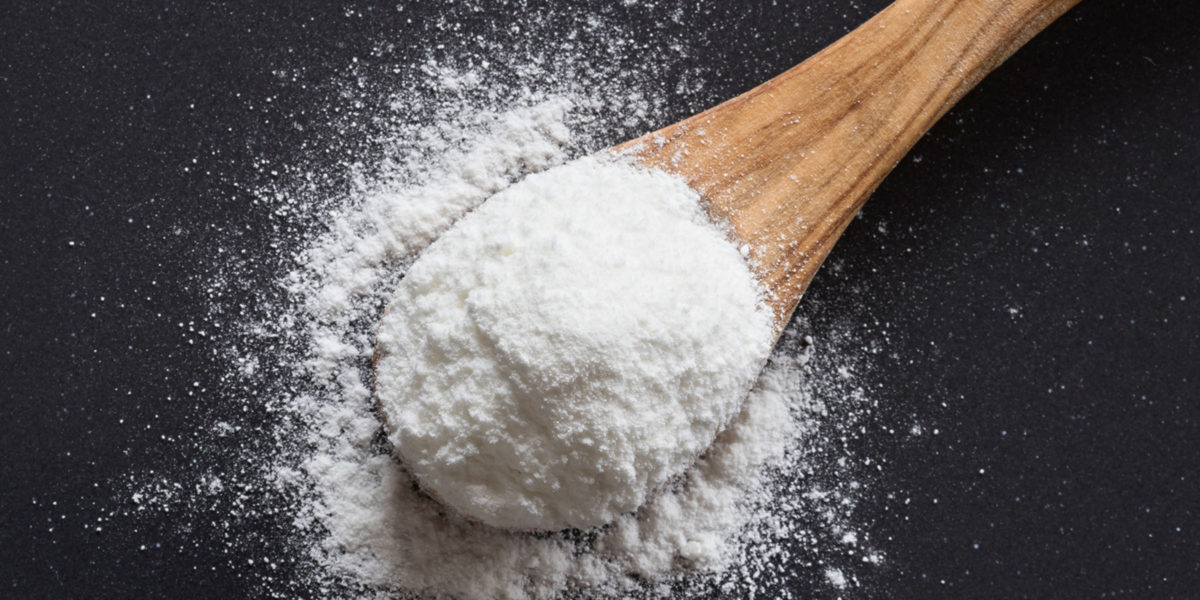
Whether you want to get rid of dark stains on utensils or restore the natural sheen of your scorched cookware, baking soda has proven to be an effective solution.
You only need to soak the vessel in a solution of baking soda and water for 15 to 20 minutes. Afterwards, just rinse or wash it with any dishwashing liquid.
Dishwashing Liquid
Standard dishwashing solutions can also be used to effectively remove marks from utensils. All you have to do is add some liquid detergent and hot water to the burnt utensil.
For a few minutes, let the mixture rest in the pan. Wash it afterwards to completely remove the stains and restore its shine. You might need to repeat the entire procedure a few more times if the stain is particularly difficult to remove.
Vinegar
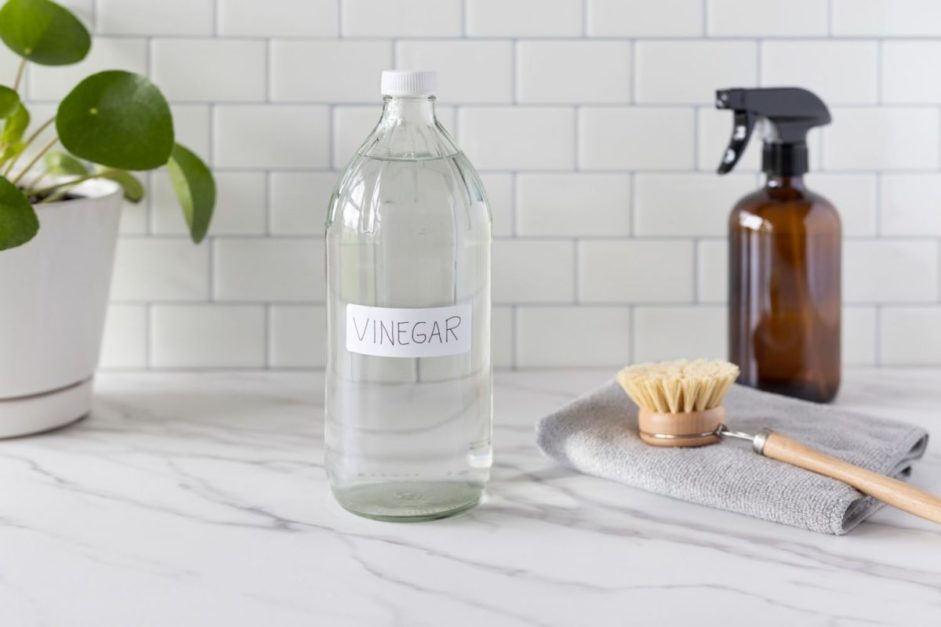
Vinegar is the most effective cleaning agent. The afflicted side of your pan should be soaked in vinegar for a while to remove the crusty burnt food residue before being washed with soap or dishwashing detergent.
This is especially effective in the case of aluminium pots and pans.
Cream of Tartar
It has tartaric acid and potassium hydroxide, which are effective in removing burnt residue from kitchenware. Prepare a mixture of a cup of water and two heaping tablespoons of cream of tartar, and bring it to a boil.
Let it cool before using your regular dish soap to scrape and clean the burned object. You might need to repeat the trick a few times for tougher stains.
Tomato Ketchup
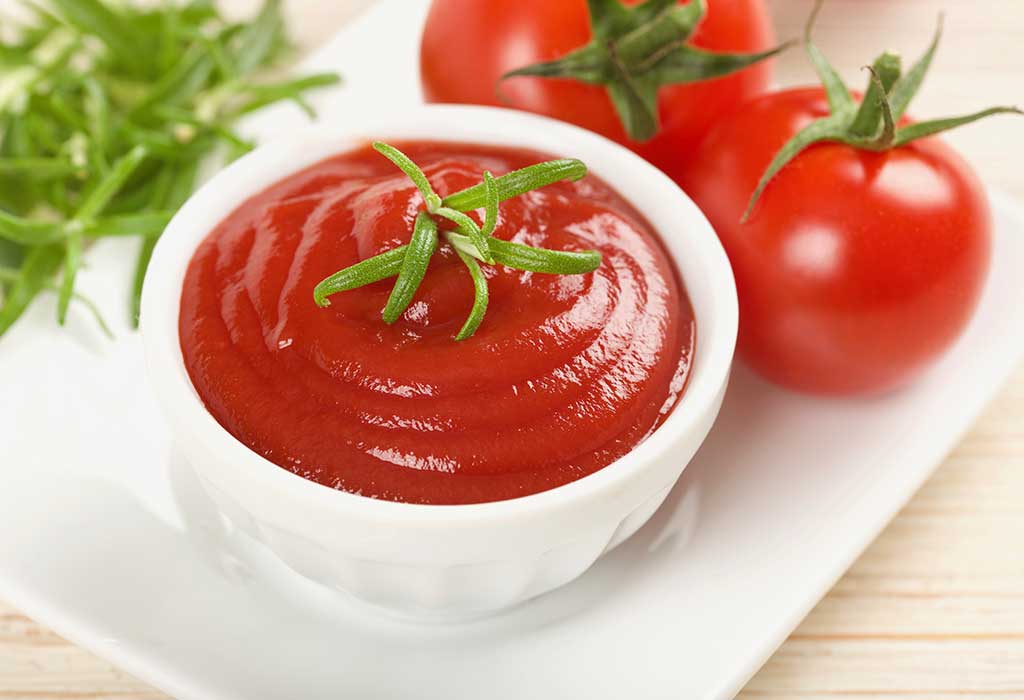
Here’s another quick and easy tip that you can use to clean a burnt stainless steel item. Overnight, cover the charred mess with a thick coating of tomato sauce.
Because tomatoes are acidic, charred bits are consumed. Clean your utensil as usual in the morning and watch the burnt marks disappear.
Lemon Juice
Lemon juice is a common active ingredient in dishwashing soaps because it is effective in removing grease stains. It can also be used to remove burnt stains on crockery, especially nonstick skillets.
All you have to do is cover the vessel with a generous amount of lemon juice for a while. The acidity of the juice will make it simple to remove the stains.
Alcohol
You can also remove scorched scars with alcohol. It functions similarly to vinegar in this regard, by softening the burnt layer and enabling you to scrape it off with a plastic spatula.
Fabric Softener
Surprisingly, fabric softeners can also remove burnt stains from utensils. It can take a few hours to work, and you can even let the vessel be covered with fabric softener overnight.
The charred chunks will easily melt away if you wash the utensil with warm water and dish soap in the morning.
Aerated Drinks
When it comes to removing burnt-on debris from a vessel, fizzy drinks can also work wonders. Only a small amount needs to be poured into the vessel, after which it should be put on low heat.
Remove from heat as soon as the bubbles stop popping. See the burned patch disappear by using a plastic brush and dish soap to scrub it off. This method is especially effective for aluminium cookware.
Some of these items can be extracted from your kitchen garden.
For more information, visit Graana Blog.
